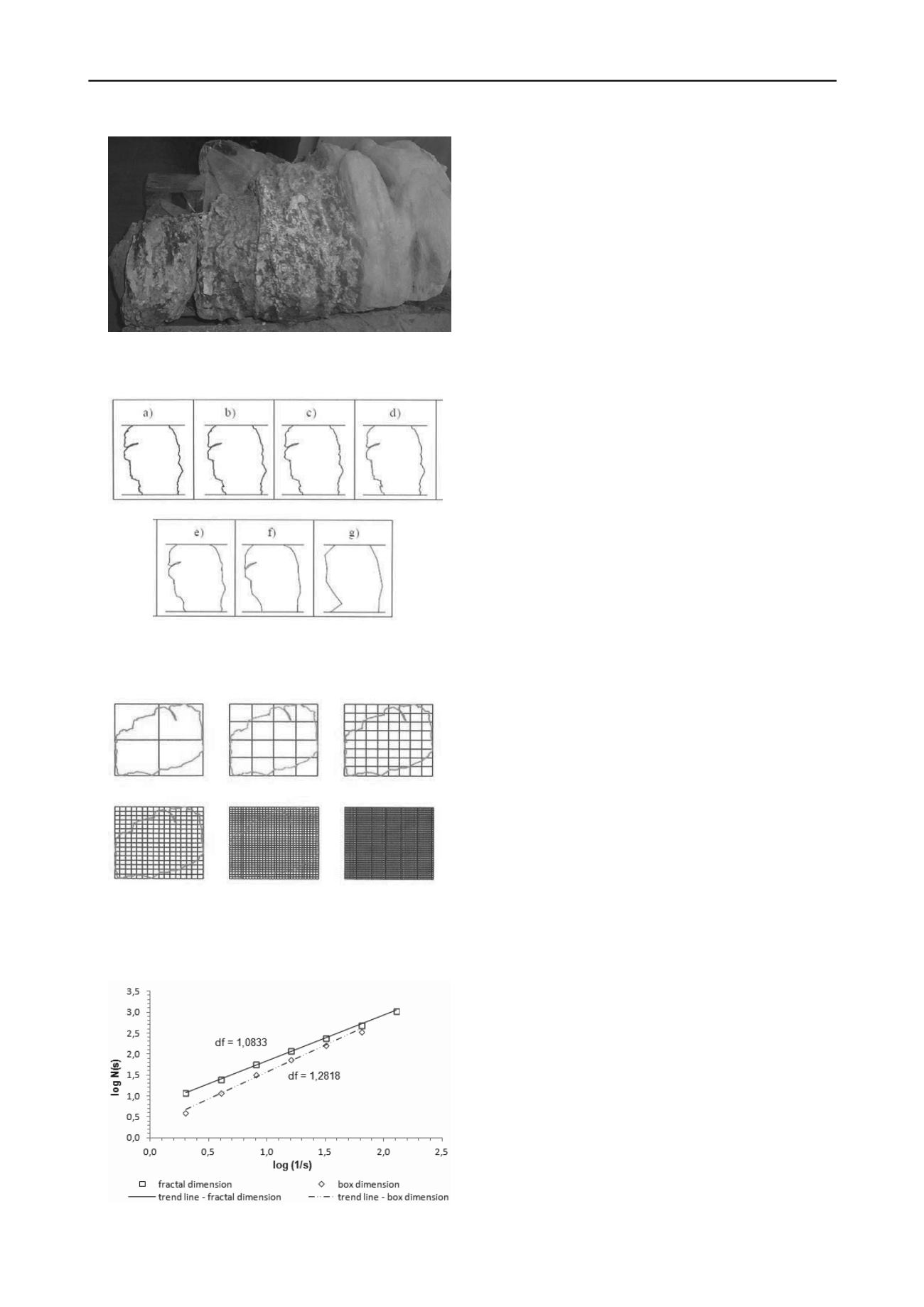
2440
Proceedings of the 18
th
International Conference on Soil Mechanics and Geotechnical Engineering, Paris 2013
3 SUMMARY
Issues presented in the paper show the scale of problems related
to the representation of actual interaction of jet grouting
columns with the surrounding subsoil. Theoretical models
require repetitions and calibration, making the obtained results
realistic. It is especially important to determine the thickness
and parameters of the contact zone formed at the contact of
column material and the subsoil.
Figure 5. Structure of excavated jet grouting column
(photo: J. Bzówka).
The shape and dimensions of formed jet grouting columns
depend on the type and condition of soils building the subsoil
and on technological parameters of columns forming, such as:
the injection pressure, the injection rod pulling out and rotation
speed, the density of injected cement grout as well as the
number and size of injection nozzles.
A large number of factors affecting geometry and hence
related columns bearing capacity and the soil
cement material
strength causes problems in designing. To verify geometry of
columns made it is necessary to perform excavations and to
measure the diameter, circumference shape and to assess the
shaft structure. Mathematical issues from the field of fractal and
box dimension allow creating a clear description of
a complicated shape of jet grouting columns shaft.
4 ACKNOWLEDGEMENT
The co
Authors: Anna Juzwa and Lidia Wanik received a grant
of the DoktoRIS project – a scholarship program for innovative
Silesia region co
financed by the European Union of the
European Social Fund.
5 REFERENCES
Figure 6. Method for determining fractal dimension for column
(Kawa and Wieczorek 2005; Wanik 2012a).
Bzówka J. 2009. Interaction between jet grouting columns and subsoil.
Monograph published by the Silesian University of Technology,
Gliwice (in Polish).
Bzówka J. 2010. FEM analysis of interaction of jet grouting column
with subsoil. Scientific Conference on Natural and Technical
Problems of Environmental Engineering – Soil parameters from in
situ and laboratory tests, Poznań 27-29 September 2010, 445
455.
Bzówka J. and Juzwa A. and Wanik L. 2012. Selected problems of jet
grouting application.
Inżynieria Morska i Geotechnika
, No. 4,
514
519 (in Polish).
Bzówka J. and Skrzypczyk J. 2011. Fractal dimensions in geotechnics.
Proc. of the 9
th
International Conference on New Trends in Statics
and Dynamics of Buildings, 20-21 October 2011, Bratislava,
Slovakia, 21
24 (in Polish).
Figure 7. Method for determining box dimension for column
(Kawa and Wieczorek 2005; Wanik 2012a).
Juzwa A. 2012a. Computational description of interaction between
group of jet grouting columns and subsoil. Monograph:
Experimental and theoretical tests in Civil Engineering
published
by the Silesian University of Technology, Gliwice, 67
74 (in
Polish).
Juzwa A. 2012b. Subsoil strengthening by using jet grouting
technology. 9
th
fib International PhD Symposium in Civil
Engineering,
Karlsruhe Institute of Technology
, Germany, 22-25
July 2012.
Kawa K. and Wieczorek W. 2005. Fractals application in geotechnics.
Master thesis, The Silesian University of Technology, Faculty of
Civil Engineering, Gliwice (in Polish).
Modoni G. and Bzówka J. 2012. Analysis of foundations reinforced
with jet grouting.
ASCE
Journal of Geotechnical and Geo-
environmental Engineering
.
Wanik L. 2012a. Application of fractals to describe shape of jet
grouting columns. Monograph:
Experimental and theoretical tests
in Civil Engineering
published by the Silesian University of
Technology, Gliwice, 133
141 (in Polish).
Wanik L. 2012b. Fractal and box dimensions in description of jet
grouting columns geometry.
Inżynieria Morska i Geotechnika
, No.
4, 432
434 (in Polish).
Wanik L. and Bzówka J. 2012. Influence of various factors on geometry
of jet grouting columns.
Zeszyty Naukowe Politechniki
Rzeszowskiej, Budownictwo i Inżynieria Środowiska
, z.59
(3/12/IV), No. 283, t. 4, 117
124 (in Polish).
Figure 8. Fractal dimension and box dimension for jet grouting column.


